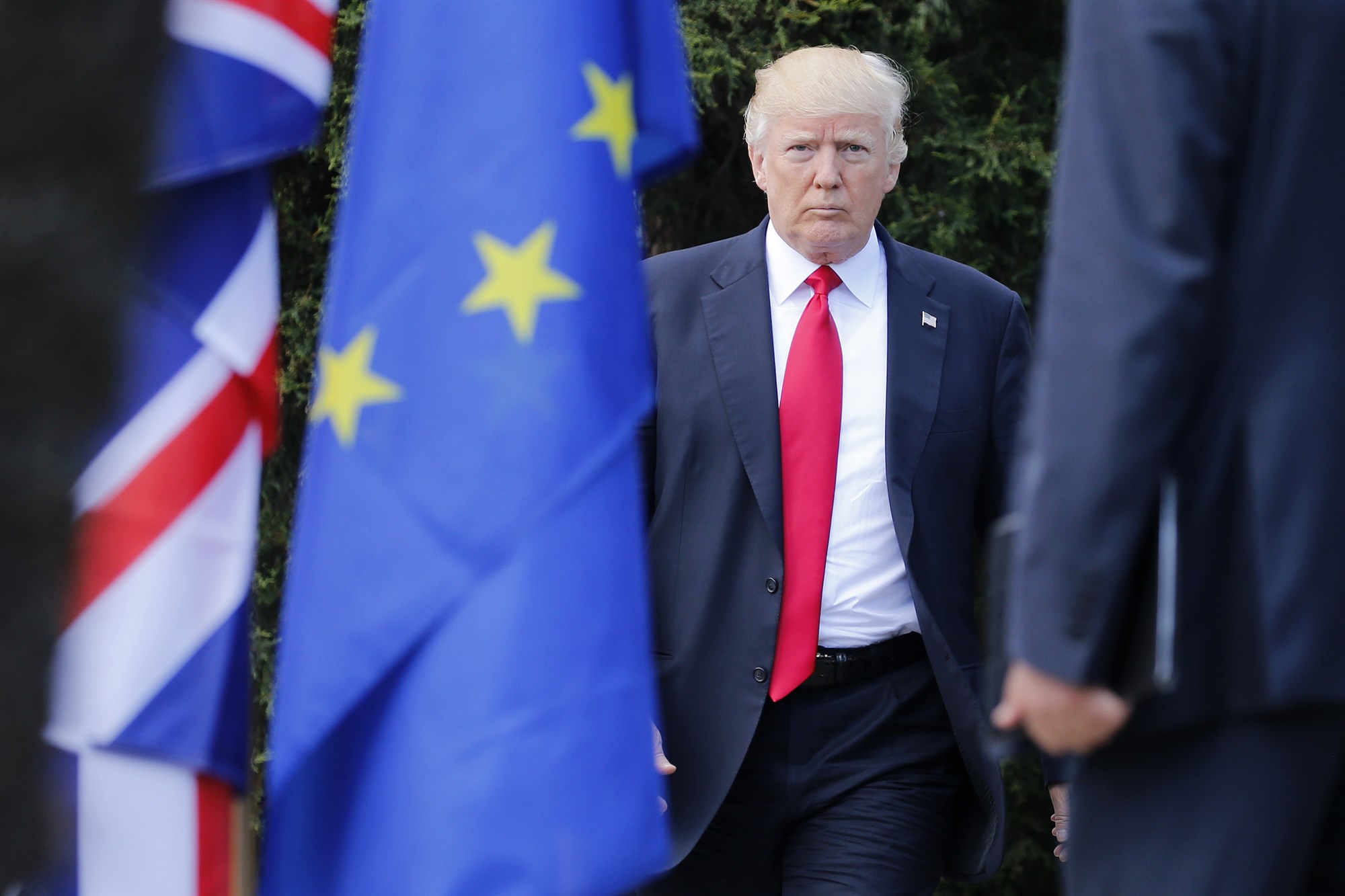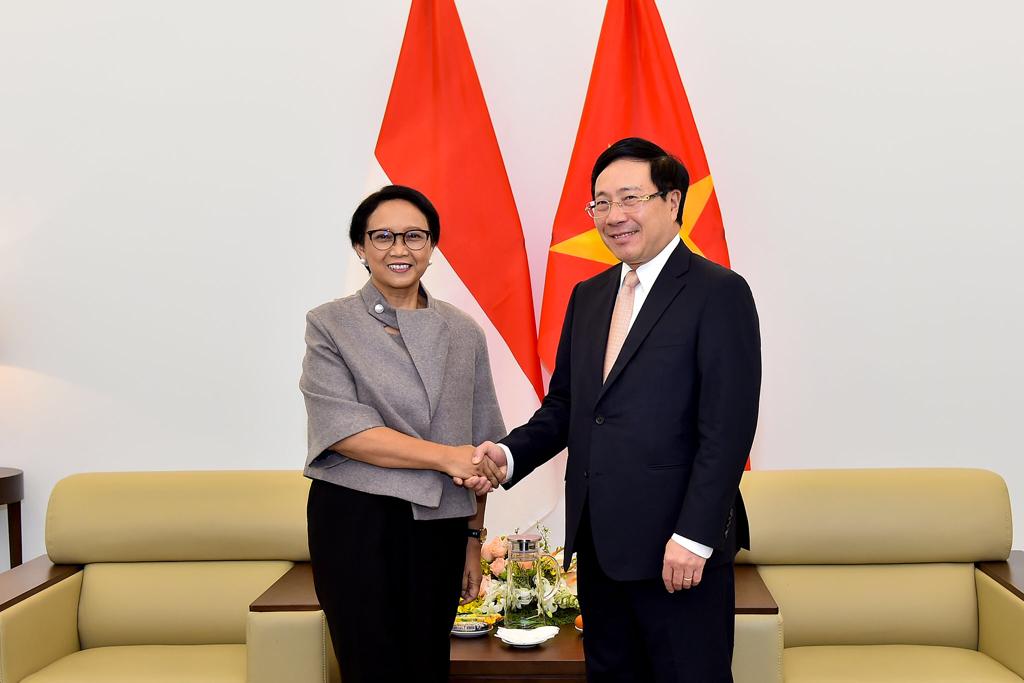INDONESIA & CHINA FM VISITS TO SE ASIA

Writer: Hendra Manurung is currently a doctorate candidate in international relations at Padjadjaran University, Bandung, West Java
After World War II (1945-1990) until the current digital revolution 4.0, the international community experienced the Pax Americana momentum. A period of global development and international peace has taken shape, with the United States as a superpower and the international political system leading to unipolar and arrogance of interests alone.
During Wang Yi’s visit to Indonesia on January 13, 2021 (kemlu.go.id, 14/1/2021), 5 points of understanding were reached, namely 1) coping with the pandemic, 2) deepening pragmatic cooperation in various fields, 3) encouraging regional cooperation in East Asia, 4) maintaining peace and stability in the South China Sea, and 5) together to maintain and encourage multilateralism.
So far, Indonesia and China have discussed and exchanged ideas about the global situation, particularly in facing the challenges of the COVID-19 pandemic. Regarding the issue of health cooperation, the Indonesian government emphasized the importance of the sustainability of regional health cooperation. Especially in the framework of ASEAN cooperation as a follow-up to China’s various commitments in handling the global pandemic, such as the US$ 5 million commitment to support the Public Health Cooperation Initiative: Program on Public Health Emergency Preparedness Capacity or PROMPT, and a US$ 1 million commitment to the ASEAN COVID-19 Response Fund.
Since the beginning of the pandemic in March 2020, Indonesia and China have collaborated in health cooperation both to provide diagnostic, therapeutic, and vaccine tools. In addition, the two countries are also committed to increasing the independence of the drug industry, medicinal raw materials, and medical devices in Indonesia.
In the midst of a pandemic and a sluggish global economic situation, Indonesia’s exports to China in 2020 increased by 10.96 percent. One of the products that experienced a significant increase was steel exports to China, which was the result of the downstream industrial process in Indonesia.
Therefore, in order to achieve balanced and mutually beneficial trade, Indonesia underlines the importance of joint efforts to overcome various obstacles in bilateral trade, in particular, to expand and open up Chinese market access for Indonesia’s leading exports such as palm oil, fishery products, tropical fruit, and swallow’s nest.
Both countries agreed to encourage boosted foreign investment and mutual cooperation in infrastructure development through partnerships that are quality, environmentally friendly, and which can absorb Indonesian workers.
Jakarta appreciates Beijing for the cooperation in handling problems of Indonesian crew members working on Chinese-flagged ships, including support for the return of Indonesian crew members from November to December 2020. In addition, it also encourages solutions for the return of stranded crew members, settlement of labor rights, and improvement of conditions, safe and conducive work, and law enforcement implementation through mutual legal assistance.

On the other side, regarding regional and global cooperation, it is necessary to implement the ASEAN Outlook on the Indo-Pacific (AOIP), as well as Indonesia’s determination to continue to maintain ASEAN centrality in its implementation. It is very important to maintain stability and peace in the region, to keep the South China Sea as a peaceful and stable sea. All countries need to respect and implement international law, including the 1982 UNCLOS.
While in Indonesia, Chinese Foreign Minister Wang Yi has also reviewed one of the synergy implementation projects of the Indonesia Global Maritime Fulcrum and the China Belt and Road Initiative and a meeting with the Coordinating Minister for Maritime Affairs and Investment in Lake Toba, North Sumatra, as well as carrying out a courtesy visit to President Joko Widodo.
Hence, it needs to be a shared priority of China and Indonesia are both large developing countries and important new economic powers, where strengthening cooperation between the two countries has strategic significance and global influence continuously (http://indonesian.cri.cn/20210115). China is willing to work with Indonesia to carry out the mutual beneficial understanding reached by the heads of the two countries, push forward bilateral relations to achieve greater progress by prioritizing joint prevention of the pandemic, and developing mutually beneficial cooperation without harming Indonesia’s political economy interests in the region, of course.
Wang Yi’s visit is part of a series of visits by the Chinese Foreign Minister to several ASEAN countries and in the framework of celebrating 70 years of Indonesia and China diplomatic relations.
Chinese Foreign Minister Wang Yi initiated his Southeast Asian tour at the beginning of this week beginning from 12 to 13 January 2021, after he closed a six-day tour of Africa the previous week (thediplomat.com, 15/1/2021). Wang’s trip is pursued at stabilizing South China Sea region, strengthening maritime cooperation with Southeast Asian states, and expecting positive results from its Belt and Road Initiative development. That’s why Wang Yi chose to visit Myanmar, which assumed the roles of the coordinator of China-ASEAN relations and co-chair of consultations on the Code of Conduct, known as COC, in 2021, as well as Brunei, which holds the rotating ASEAN chairmanship for 2021. As China wants to accelerate the COC negotiations, better policy coordination with these two countries would be beneficial. Beijing is trying to upgrade its political economy relations with Jakarta and Manila by providing vaccine availability and stronger bilateral economic cooperation benefits along with maintaining regional peace and stability.
Meanwhile, January 20, 2021, will see the change in US administration with President-Elect Joe Biden swearing-in as the 46th US President, things remain tensed among various world major powers conflicting interest from Middle East, Africa, Europe, and the Asia Pacific to how will Joe Biden administration decide and behave strategically in responding to any international relations issues dynamics.
Under the leadership of Joe Biden from 2020 to 2024, it is likely that the position of the United States as a superpower will soon improve its ambitious presence in various parts of the world, especially in the Southeast Asia region. This is done by Washington D.C regarding the emergence of a real threat to Beijing’s maneuver ambition to dominate and control the South China Sea region through its baseless nine-dashed line claims.
Washington DC policymakers have considered the possibility of sharp rivalries between the US and Chinese powers in the Southeast Asian region. This has happened since Hillary Clinton became US secretary of state with ‘Pivot to Asia’ diplomacy along with US President Barack Obama’s Rebalance Policy in 2010.
China must maintain stability and embodiment in the South China Sea region to respect international law, including the implementation of UNCLOS in 1982. Otherwise, it will escalate conflictual tension and open conflict with the US.
Therefore, the Southeast Asia region may become a central point of economic growth in the Asia Pacific region as it has become a crucial point for the struggle for influence from the US and China followed by the deployment of massive military forces in the South China Sea region since 2018.
Since most of the Southeast Asian countries rely heavily on foreign trade and investment, building closer economic ties with China would be the best choice for them to put their economies back on their feet. In fact, the 10 countries of Southeast Asia collectively became the biggest trading partner for China for the first time in 2020, overtaking the European Union. In the new context of the slowed spread of COVID-19 after vaccine rollouts, the implementation of BRI projects will be accelerated to boost employment and economic development in Southeast Asian countries.
A shift in the world political constellation which has been dominated by the United States, European Union, and China is likely to sharpen Beijing and Washington D.C.’s interests in the region. This is related to the possibility of deploying US military power under Joe Biden’s administration to the Southeast Asia region in response to China’s massive militarization in the South China Sea.
Moreover, the rivalries of the US and China in the South China Sea region are also a manifestation of Indonesia’s regional interests and maintaining a free and active foreign policy orientation, and optimizing Indonesia’s role in maintaining world peace.
Thereafter, in the midst of the global pandemic, suppose Indonesia will rise to a world major power by taking political economy advantage and utilizing the global situation of the shifting constellation of the US, the EU, and China in the international political and economic system.
Hence, the South China Sea regional situation is likely to continue to heat up with the growing importance of the region’s economic development, in which about 60 percent of world trade passes this maritime route.
Small regional countries with a tendency to an alliance with the US, such as the Philippines, may be used by the US to trigger the destabilization of the South China Sea area, which of course has great potential to disrupt China’s trade flow.
Certainly, China will be very ambitious to defend its political economy interests under the US new President Joe Biden administration. So far, the countries in Southeast Asia that have an alliance with China are generally small countries, such as Cambodia, Myanmar, and Laos. China needs friends who are trusted and calculated in the region, such as Indonesia. Jakarta should negotiate and take the benefits and benefits while remaining alert to the threat of China’s unilateral claims in the South China Sea.
China must be invited to invest heavily and transfer technology without harming Indonesia’s interests. The existence of China should be optimally utilized to strengthen the resilience of Indonesia’s industry from upstream to downstream.
Indonesia as the third largest democratic country in the world with a geostrategic and geopolitics position in the Indo-Pacific region is much likely to be a reliable stabilizing actor with strong and solidify its regional strategic role as a peacebuilder in the Asia Pacific.







